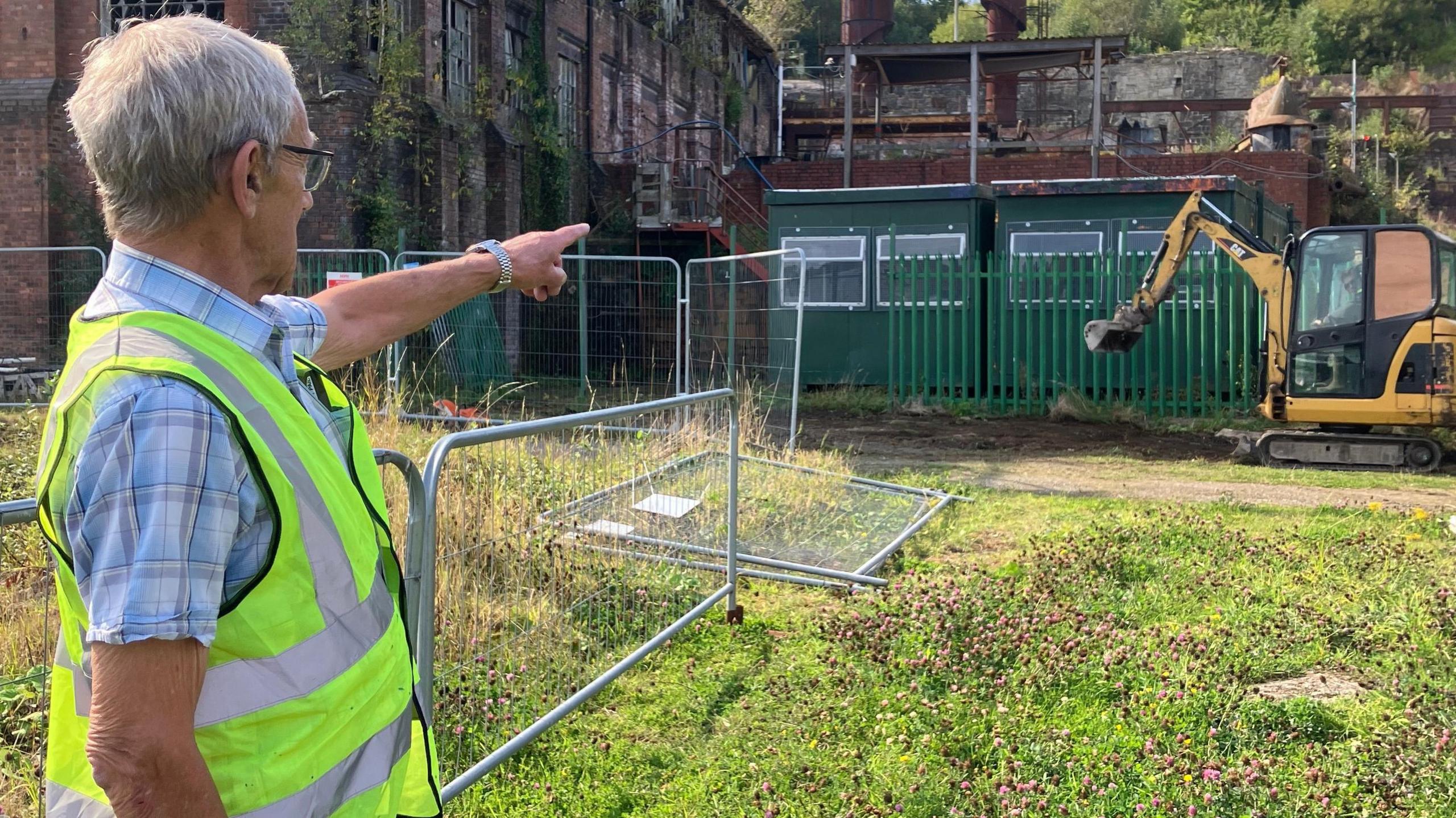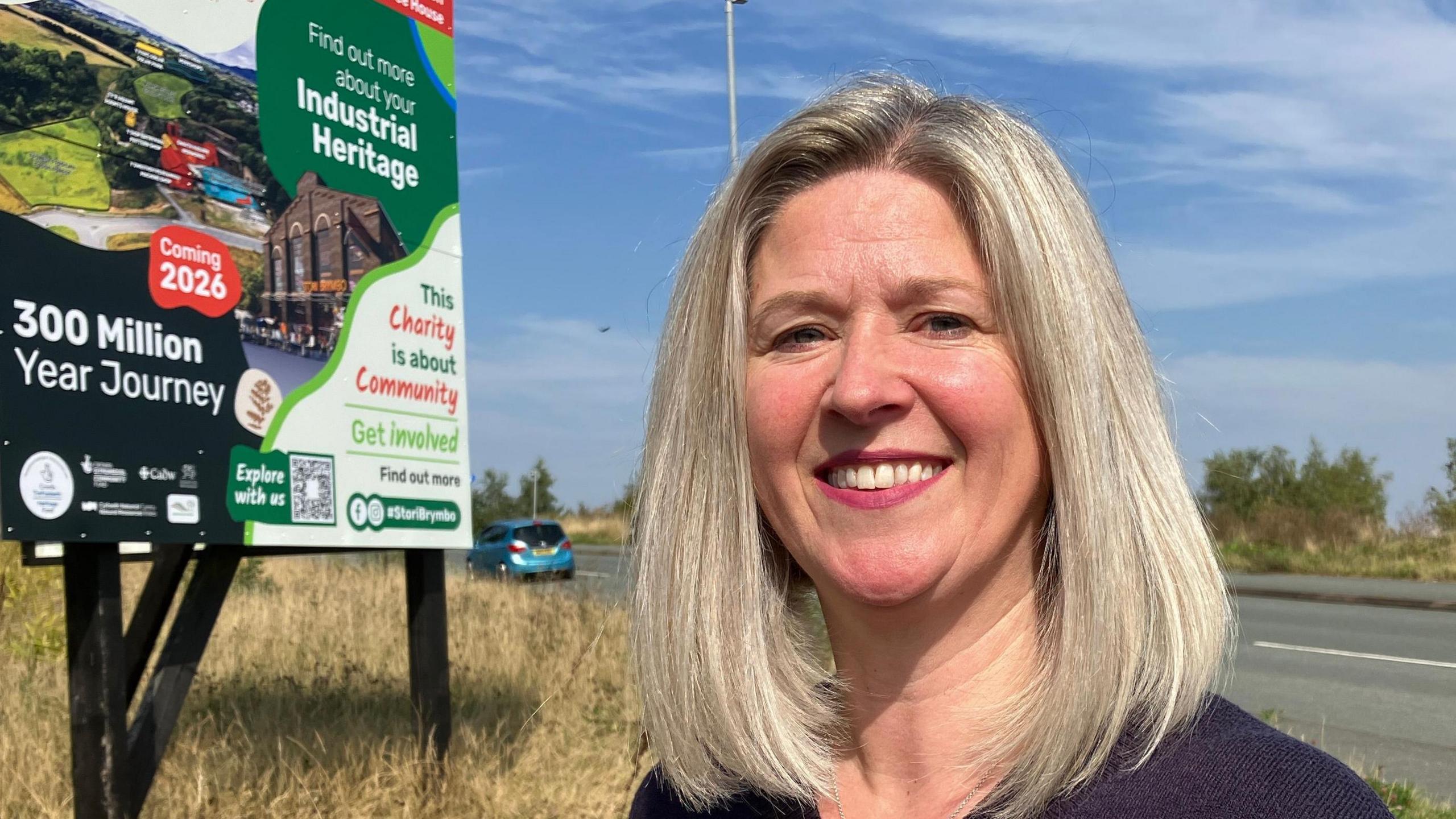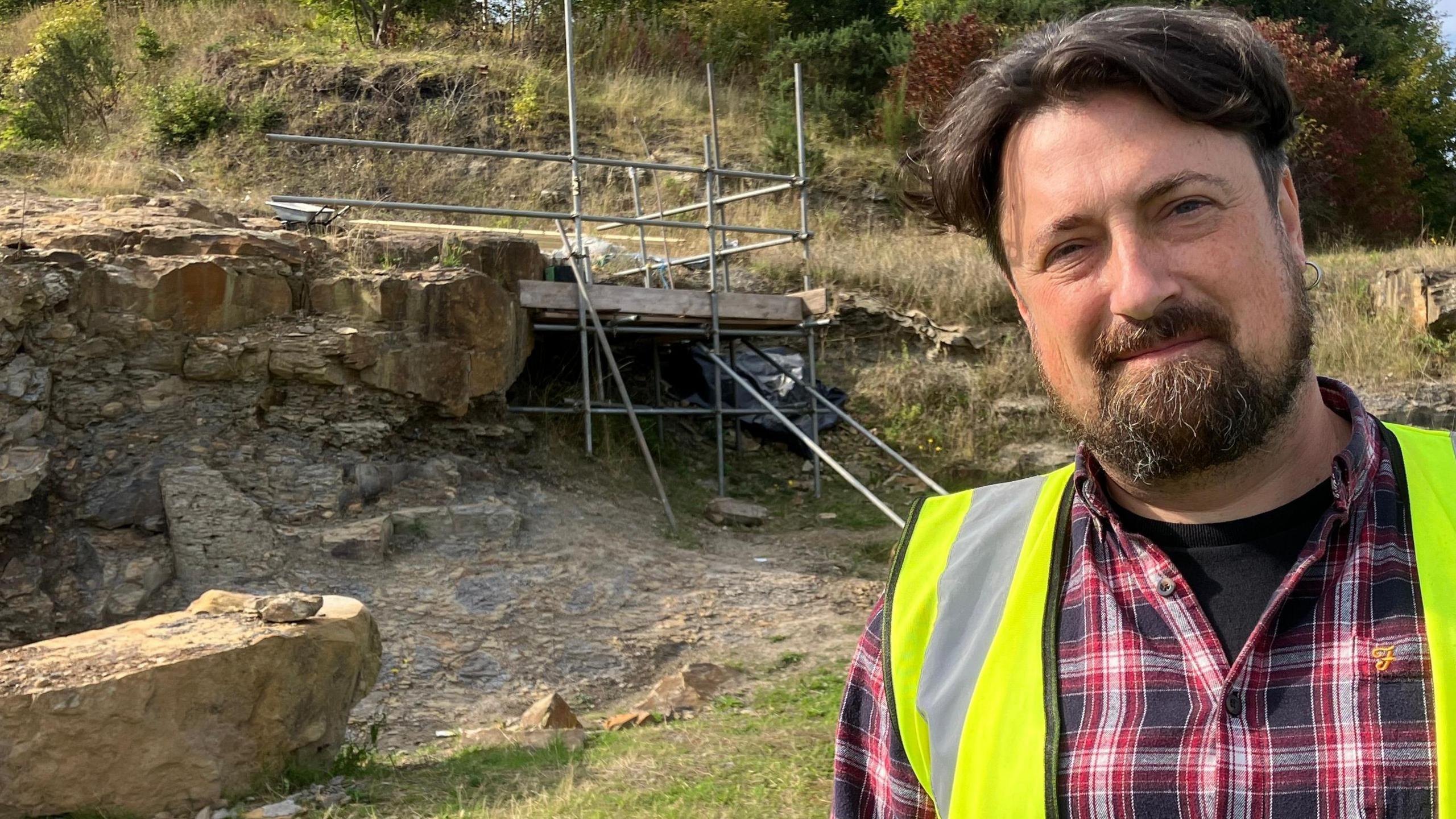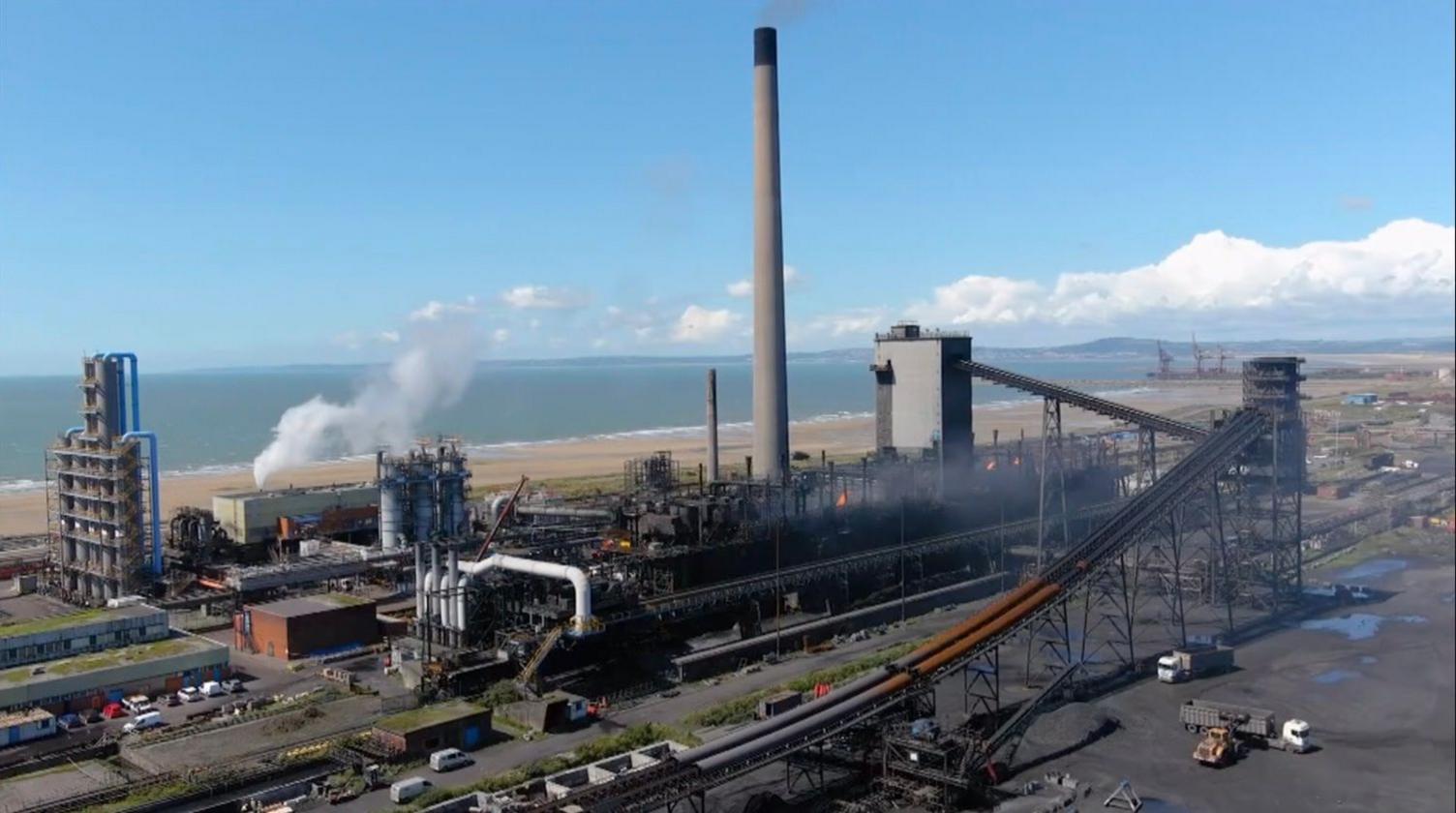New life breathed into derelict steelworks site

Brymbo steelworks closed in 1990
- Published
More than 30 years after its closure, a former steelworks is being transformed into a heritage attraction.
The £10m project in Brymbo, Wrexham, will focus on 200 years of steel production in the area and the discovery of the 300 million-year-old fossilised forest on the same site.
Brymbo Steelworks was built in 1796 and at its height employed 2,500 people.
But steel production came to an end in 1990 when 1,100 staff lost their jobs.

Colin Davies was the mill manager at Brymbo when it closed
Former mill manager Colin Davies remembers his last shift, saying: "It was a horrible day.
"I witnessed the last tap coming out of the furnace. After it had tapped out, it was extraordinary - it was silent - I’d never experienced that before because obviously the furnace is out.
"And that was the end."
Over the past 34 years there has been a long-running campaign to preserve what is left of the original site.
Now that legal wrangles have been overcome and £10m of Heritage Lottery and other funding has been pledged, construction can begin.

Nicola Eaton Sawford says education "is a really important part" of the project
Nicola Eaton Sawford, chief executive of Brymbo Heritage Trust, said: "It started from a group of people who used to be steelworkers sitting round and having a cup of tea and thinking ‘we need to protect this place’ after it closed.
"But because they couldn’t get the legal and land deal sorted, they couldn't actually get started.
"So it's only a few months ago that we finally got that nailed and we can have people working on site."
Refurbishment plans for ex-steelworks some way off
- Published14 June 2024
Council backs heritage plan for former steelworks
- Published11 February 2020
The attraction, named Stori Brymbo, will convert the old buildings into a visitor centre, coffee shop, art and retail spaces as well as areas for community and education events.
Visitors will be able to watch the real-time excavation of a 314 million-year-old fossilised forest, discovered by chance in 2003.
The trees date back to the carboniferous period and were fossilised long before dinosaurs roamed the Earth.

Dr Tim Astrop said the fossils offer a "unique opportunity" to educate people
Dr Tim Astrop is leading the work at the fossil forest and said so much can be learned about the conditions of the Earth from this site.
“Millions of tonnes of carbon was being sucked in by the giant equatorial rainforests and deposited as coal," he said.
"Over the past couple of hundred years all that coal has been put back into the atmosphere and it's something that our kids have been told they need to be concerned about.
"But they don't really understand how it all happened and we have a unique opportunity to tell that part of the story.”
Ms Eaton Sawford added: "We can tell this 300 million-year story from when a swampy area was flooded by natural events and became a coal seam, which became a colliery, which then became an ironworks, which became a steelworks."
An open day at the site is being held on Saturday and the first phase of the project is expected to open to the public in 2026.
- Published14 August 2024
